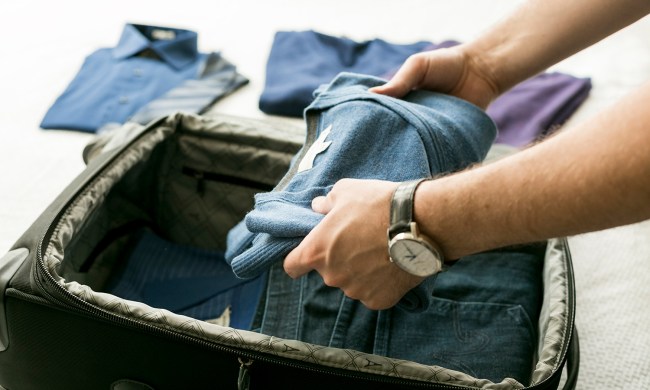If you’ve ever traveled internationally, you’re likely familiar with the traditional passport book, the little blue booklet you use to enter foreign countries. But what about the passport card? You’re not alone if you’re scratching your head or wondering why you haven’t heard more about a passport card. The passport card is often overshadowed by its more robust sibling, the passport book. However, it has unique benefits and can be a valuable part of your travel essentials. However, it does have some limitations and cannot be used as widely as a traditional passport. Keep reading to learn how a passport card is used and if getting one is a good choice for you.
What is a passport card?

A passport card is a wallet-sized, government-issued identification card that is an official document for identification purposes for specific types of international travel. Unlike a traditional passport book, the passport card is limited in scope but provides some unique advantages.
The U.S. Department of State issues passport cards to U.S. citizens. They have the same validity as a passport book—10 years for adults and 5 years for children under 16. But what makes them stand out is their convenience for certain types of travel and as an additional form of identification.
How can you use a passport card?
The passport card can be used for land and sea travel to and from Canada, Mexico, Bermuda, and the Caribbean. If you frequently cross borders by car or cruise to one of these regions, it can be a compact, easy-to-carry option.
However, the card is not valid for international air travel. So, if you’re planning to fly to Europe, Asia, or pretty much anywhere that isn’t accessible by land or sea from the U.S., you’ll still need your trusty passport book. This limitation is among the most critical distinctions between the passport book and the card.
To break it down, here’s where a passport card is valid for travel:
- Canada: Great for those who frequently drive to and from Canada for business or leisure.
- Mexico: Ideal for land crossings and short-term visits.
- Bermuda & the Caribbean: Perfect for cruise travelers exploring tropical islands without carrying a passport book.
You will still need to present a passport book for air travel to these destinations, as airline carriers and international regulations require it.
Why consider a passport card?

You might wonder why someone would opt for a passport card if it can’t be used for international air travel. There are several reasons why getting one might make sense for you:
- Convenience: The passport card is compact and fits easily in your wallet. It’s less cumbersome than carrying around a passport book, which can be bulkier and more awkward, especially if you’re on a day trip to Canada or Mexico.
- Secondary identification: Many people get a passport card as a secondary form of government-issued ID. It’s accepted in place of a REAL ID for domestic air travel, which can be useful if you don’t have a state-issued driver’s license that complies with REAL ID standards or need a backup.
- Security: If you’re worried about losing your passport book during a road trip or cruise, having a passport card as an alternative can be a lifesaver. You can leave your passport book safely at home or locked away and use the card as your primary identification for border crossings.
- Cost: The passport card is significantly cheaper than the passport book. If you’re a frequent traveler to Canada or Mexico and don’t plan on flying internationally, the passport card is an economical option.
How to apply for a passport card

Applying for a passport card is straightforward. You can apply in person at a passport acceptance facility, such as a post office or some public libraries, or by mail if you meet specific requirements (like already having a passport book).
You’ll need to submit the following:
- Completed Form DS-11 (if applying in person) or Form DS-82 (if renewing by mail).
- Proof of U.S. citizenship (like a birth certificate or naturalization certificate).
- Proof of identity (driver’s license or government-issued ID).
- One passport-style photo.
- Applicable fees.
Once submitted, routine service processing typically takes 4-6 weeks, but expedited options are available for an additional fee if you need your passport card sooner.
How much does a passport card cost?
If you’re applying for a passport card for the first time (and don’t already have a passport book), the cost is $65 for adults and $50 for children under 16. If you already have a valid passport book and just want to add a card, it’s even cheaper – only $30.
Keep in mind that these prices are subject to change. For the most current fees and application details, it’s always a good idea to check the U.S. Department of State’s official website.
Should you get a passport card?

Whether or not to get a passport card depends on your travel habits and needs. Here are a few scenarios where having a passport card makes sense:
- Frequent border crossers: If you often drive to Canada or Mexico for work, family, or leisure, a passport card is an ideal option.
- Cruise travelers: For those who enjoy cruising around the Caribbean or Bermuda, the passport card can be an easy-to-carry travel document.
- Backup identification: If you want an additional form of government-issued ID, the passport card is worth considering.
However, if your travels are more extensive and include air travel to various international destinations, you’ll still want to have your passport book as your main travel document.




